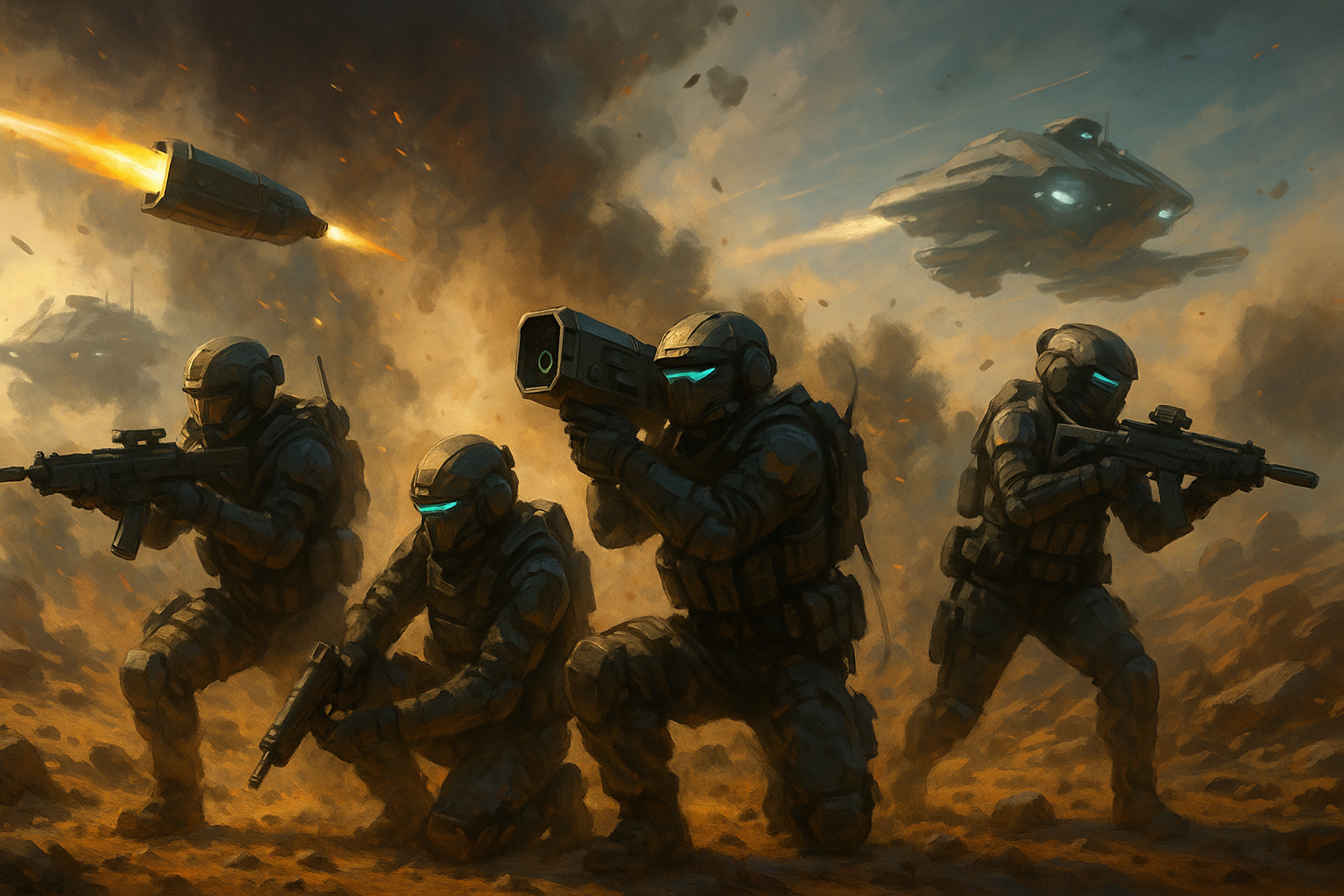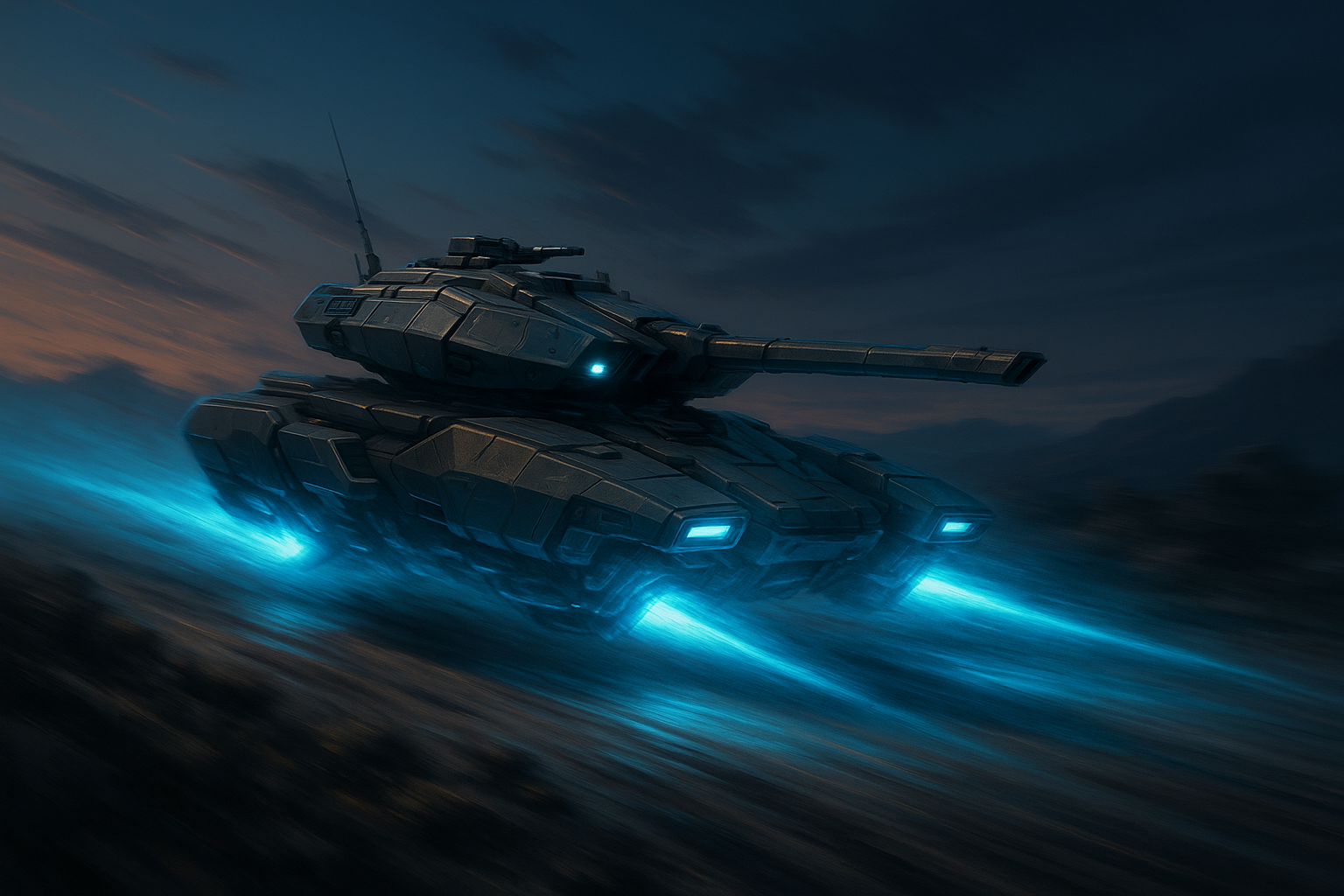- Published on
Tanks are Dead. Long Live Tanks!
- Authors

- Name
- Tony Geiser
Introduction
Tanks have been a mainstay of the modern battlefield for over a century.
Yet in conflicts from Ukraine’s open plains to Gaza’s urban labyrinths, cheap drones and precision-guided munitions have exposed glaring vulnerabilities. As thousands of armored vehicles fall to loitering munitions and long-range rockets, militaries worldwide are asking: are tanks worth the hefty price tag and logistical headache, or have they become glorified museum pieces?

Historical Legacy and Core Strengths
When British Mark I tanks first rumbled across no-man’s-land in 1916, they shattered trench-warfare’s stalemate.
Their heavy armor, powerful guns, and all-terrain mobility allowed infantry to seize and hold ground under withering fire, something neither artillery nor airpower could achieve alone. That fundamental role hasn’t changed: a tank’s ability to punch through defenses, provide direct fire support, and shield dismounted troops remains indispensable in combined-arms warfare, just as the Holt-Feldt “land ironclads” did in early sci-fi pulp stories.
Modern Threats and High-Profile Losses
In Ukraine, over 11,000 armored vehicles, among them some 3,600 tanks, have been destroyed or rendered inoperable, often by inexpensive commercial drones raining explosives onto engine decks or top armor.
Precision loitering munitions and tandem-warhead anti-tank guided missiles exploit turrets’ roof armor, turning MBTs into high-value targets. Urban settings magnify these threats: narrow streets restrict maneuver, while adversaries can conceal RPG teams and ambush tanks from close range, scenes eerily reminiscent of dystopian megacities in Blade Runner where infantry ambushes are king.
Adapting to the New Battlefield

Despite heavy losses, commanders stress that tanks remain indispensable for breakthroughs and defensive strongpoints:
- Active Protection Systems (APS): Trophy, Iron Fist, and Drozd intercept incoming rockets and missiles before they strike, a game-changer in open and built-up areas, akin to the energy shields on a Star Wars AT-AT walker.
- Networked Sensors & Drones: Unmanned ground and aerial scouts mark targets and provide real-time overwatch, reducing surprise attacks, channeling the recon-bot tactics seen in Ghost in the Shell.
- Combined-Arms Tactics: Integrated infantry, artillery, electronic warfare, and close-air support help tanks navigate minefields and drone swarms, much like UNSC Pelicans guiding Spartans to hotspots in the Halo franchise.
Cost, Logistics, and Mass Production
A modern main-battle tank can exceed $10 million, require specialized transport, and burn through hundreds of liters of fuel per hour.
Spares, maintenance crews, and secure supply lines complicate deployments. Some analysts argue for supplementing, or even replacing, tanks with swarms of AI-controlled drones and loitering munitions, cheaper to produce and harder to intercept en masse, recalling the drone swarms of The Expanse.
Others point out that mass-producing simpler, diesel-powered designs can mitigate costs and losses, as seen with Turkey’s Altay program and Poland’s PMV-G.
Countering Tanks

Even the heaviest battle tanks become vulnerable when pitted against agile, well-trained anti-tank teams. Modern infantry squads leverage mobility, surprise and precision to negate a tank’s armor and firepower:
Hit-and-Run Tactics Small teams armed with portable anti-tank guided missiles (ATGMs), rocket-propelled grenades or recoilless rifles can strike a tank’s weaker side or rear armor, then immediately relocate. By firing from covered positions—ditch edges, building corners or hull-down ridgelines—and rapidly “shooting and scooting,” they force the tank crew into a defensive mindset, disrupting their tempo.
Multi-Vector Engagements Coordinating simultaneous attacks from different directions multiplies a tank’s exposure. One team might lob an RPG at track links to immobilize the vehicle, while another zeroes in with an ATGM on the turret ring. Overlapping fields of fire and staggered salvoes overwhelm the tank’s limited active protection systems (APS) and complicate its ability to return fire.
Urban and Forested Ambushes Tanks shine in open terrain, but narrow streets and dense vegetation nullify their shooting lanes and maneuver room. Anti-tank teams use rooftops, window lines and wooded concealment to strike at close range, where even a lightly armored infantry fighting vehicle can inflict crippling damage before the tank’s main gun can acquire the target.
Sensor-Fusion and Recon Drones Small drone teams or forward observers guide anti-armor weapons with real-time imagery. By spotting tanks beyond visual range and transmitting targeting data, they allow missiles to be fired from standoff distances—often outside the tank’s effective counter-battery envelope—while the launch team remains safely concealed.
Decoys and Electronic Warfare Deploying inflatable dummy tanks and spoofing thermal or radar sensors draws enemy armor into kill zones. Electronic jammers can blind APS radar or disrupt fire-control systems, making even direct hits easier for shoulder-fired weapons.
Combined-Arms Integration Anti-tank squads rarely operate in isolation. When synchronized with artillery barrages, drone strikes and close-air support, their small-unit actions plug into a broader suppression network—diluting the tank’s battlefield impact and forcing armored units to flinch at every corner.
Science Fiction and the Future of Armor

Sci-fi universes explore extremes of armored warfare:
- Mechs vs. Tanks: Franchises like BattleTech and MechWarrior pit giant BattleMechs against hover-tanks, raising questions about scale, crew survivability, and logistical footprint.
- Energy Shields & Reactive Armor: Warhammer 40K equips Baneblades with void shields, while Starcraft Siege Tanks employ adaptive plating to shrug off zergling assaults.
These fictional extrapolations highlight possible evolutions: electromagnetic armor, AI-piloted hulls, and modular weapons pods.
The Road Ahead
The future likely lies in hybrid forces: lighter “drone tanks” with remote-turreted guns, modular armor packs, and integrated AI for target identification.
Next-generation designs may use electric drivetrains, active camouflage, and loitering anti-drone countermeasures. However, as long as ground forces must physically seize and hold terrain, something armored, mobile, and heavily armed will be needed.
Conclusion
Tanks are neither obsolete relics nor invincible behemoths. Their viability hinges on doctrine, support, and innovation. When paired with active defenses, drones, networked sensors, and flexible logistics, plus a dash of sci-fi inspiration, modernized tanks can still dominate battlefields. Without those adaptations, however, they risk becoming expensive targets rather than war-winning weapons.